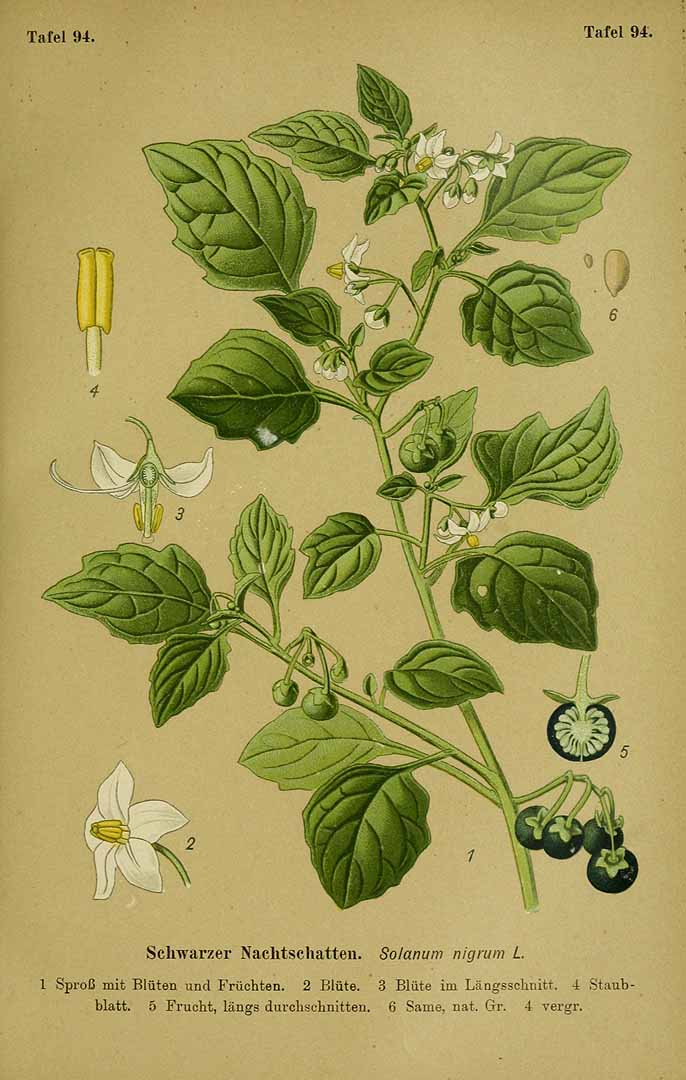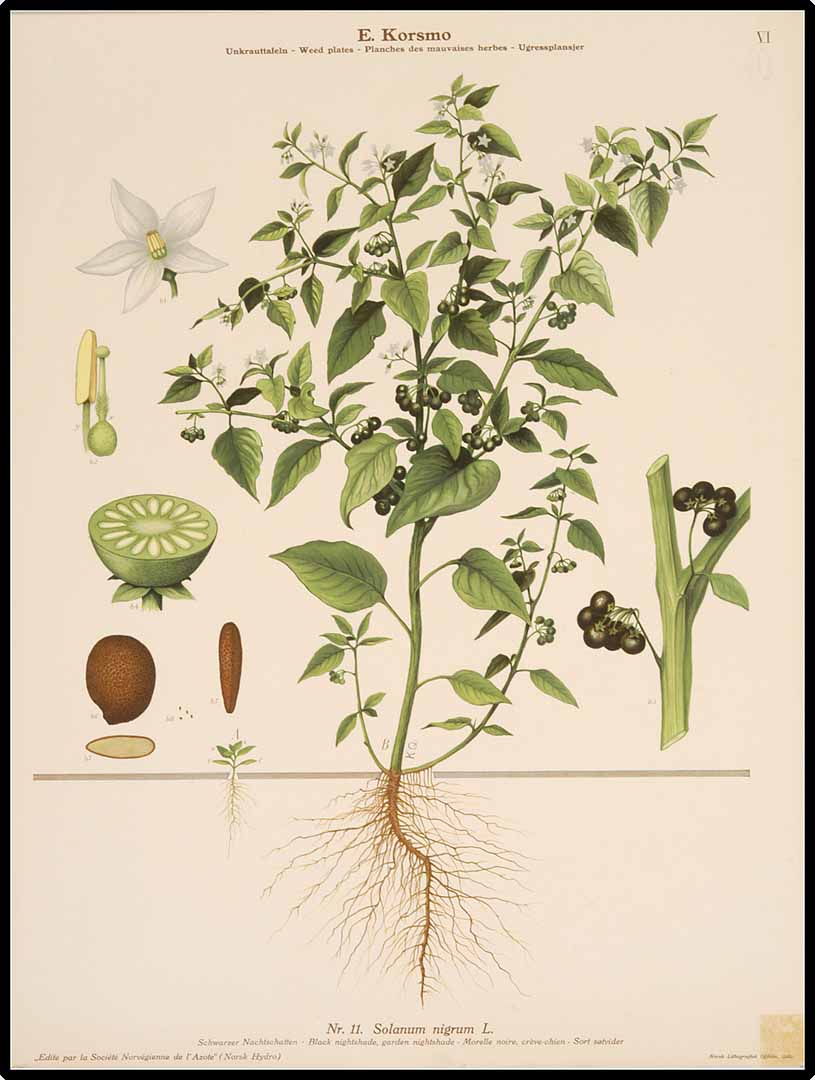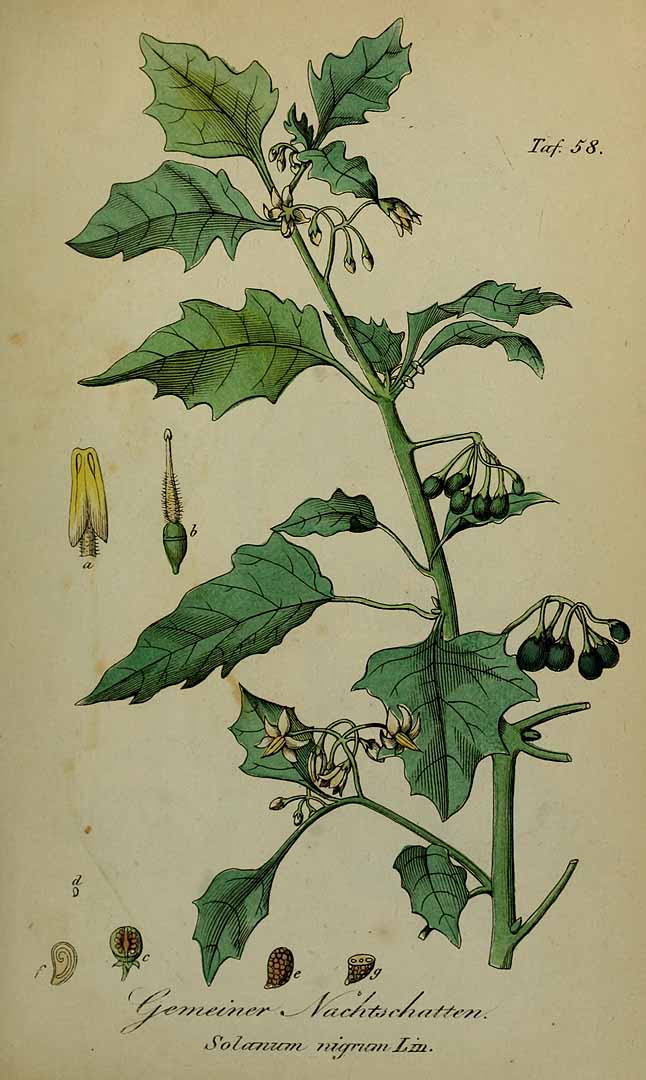! Nouveau site ici !
Vita > Plantae > Magnoliophyta > Magnoliopsida > Solanales >
Solanaceae > Solanum
Solanum americanum
(Morelle d'amérique ou américaine)


 | *
| *
Vita > Plantae > Magnoliophyta > Magnoliopsida > Solanales >
Solanaceae > Solanum
Solanum americanum
(Morelle d'amérique ou américaine)

Une herbe. Elle pousse de 30 à 150 cm de haut. C'est une plante annuelle. Les feuilles sont ovales et mesurent 5 à 10 cm de long sur 2 à 2,5 cm de large. La forme des feuilles varie selon les endroits. Les f... (traduction automatique)
→suite
⬀
Le  donne accès au menu
donne accès au menu (c'est votre point de repère) 😊 ;
En dessous vous avez la classification, à partir de la vie (Vita, premier rang) jusqu'à la classe au dessus de la plante, dont vous trouvez ensuite le nom scientifique/botanique (latin) puis le nom commun (français), le cas échéant ;
C'est aussi un lien vers la fiche complète (tout comme la ✖, en bas à droite, et le +, en dessous de la description) ;
Vient alors l'illustration (ou ce qui la remplace, en attendant), la comestibilité :
Et en bas
⬂







